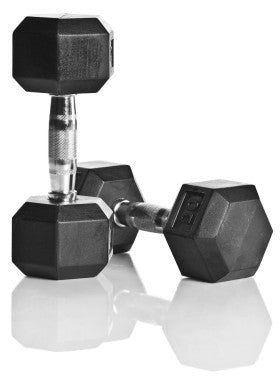
Doggcrapp Training 101 - The Ultimate Load
Assuming you don't live under a rock, you know that there are countless muscle building workout routines and approaches. Some of these approaches are designed using sound logic and progression principles, while others seems to be thrown together by your uneducated Gym-Bro.
The purpose of this article is to examine the training principles for Doggcrapp (DC) Training, a popular weightlifting approach in the bodybuilding community. This article also provides a sample routine and diet designed to optimize results while employing Dante Trudel's DC training.
 In short, DC training is a hypertrophy-oriented weightlifting approach created by Dante Trudel. This workout style utilizes high intensity, low volume, and high frequency training principles.
In short, DC training is a hypertrophy-oriented weightlifting approach created by Dante Trudel. This workout style utilizes high intensity, low volume, and high frequency training principles.
DC is not recommended for beginners or even most intermediates. it's advised for use by later intermediates and advanced lifters with a very solid strength base and at least 2 to 3 years of time in the gym.
If you have to second-guess whether DC training is right for you, it's best to wait a few more months before embarking on this high-intensity routine. However, if you're at a point where DC training seems like a good fit, keep reading.
Through the principle of progressive overload, you will be adding weight and/or reps each time you perform an exercise. This will ensure your muscles have to continue adapting and growing to the stressors you place them under.
For each exercise you will perform 3 to 5 submaximal effort warm-up sets followed by an all-out, max effort top working set (comprised of 3 sub-sets). At the end of this rest-pause style top working set, you should have NO reps left in the tank.
After you've reached failure, you're not done with this "set." Take 10 to 15 deep breaths and then perform the same exercise with the same weight, to failure.
But wait, you're not done yet! Take another 10 to 15 deep breaths and perform the same exercise with the same weight, to failure.
You don't have to stay under, or continue to hold the bar during these deep breathing portions. The purpose is to expand your diaphragm as much as possible so that you maximize oxygen intake.
At the end of this "set" (comprised of 3 sub-sets and 2 deep breathing portions) you should have completed somewhere between 11 and 15 repetitions. If you complete less than 11 reps, then the weight is too heavy; lower the weight during the next training session.
If you complete more than 15 reps, increase the weight by 5-15lbs depending on the exercise and how many repetitions you completed. All exercises should be performed in a rest-pause manner except those targeting back thickness, quadriceps, forearms, and calves. You will target those four muscle groups using straight sets.
 Extreme stretching is an unconventional approach that is not found in most bodybuilding workout routines. The goal of extreme stretching is to expand your fascia, thus increasing the potential for muscles to expand and fill this stretched and expanded space.
Extreme stretching is an unconventional approach that is not found in most bodybuilding workout routines. The goal of extreme stretching is to expand your fascia, thus increasing the potential for muscles to expand and fill this stretched and expanded space.
After each exercise - or at the end of the workout - perform extreme stretches that target the muscles you're working that day. Hold this stretch for a total of 30 to 60 seconds and make sure you're trying to flex the target muscle the entire time you're stretching. Don't be afraid to separate this 30 to 60 seconds in to multiple intervals of 5 to 10 seconds.
The only time you'll be consuming simple carbohydrates is in the pre, intra, and post-workout timeframe. Now this doesn't mean you can't have a low/no carb meal during the day or a higher carb meal for "dinner," but rather don't save all of your carbohydrates until the evening.
Given the intense nature of DC-style workout days, he doesn't advocate the use of high intensity interval training (HIIT) techniques. The reasoning is that they could significantly hinder recovery and negatively affect progressive overload in the weight room.
If you're not used to performing cardio, aim for 2-4 sessions of 30-60 minutes, preferably in the morning and in a fasted state. Utilize activities such as jogging, cycling, jump roping, elliptical training, or swimming. The idea isn't to kill yourself during these cardio sessions, but rather to ensure your heart stays in top-notch condition.
In addition to concentrated protein sources like whey, consume ample amounts of lean protein from sources like chicken, beef, egg whites, and fish.
The goal of DC training is to provide you with an intense, hypertrophy-inducing approach that will allow you to make gains year-round. Be forewarned - if you skip the cruising phases or turn the cruising phases into more of a blasting phase, you're going to overreach/underrecover/overtrain/burn out quickly.
For each muscle group, you will perform 3 exercises, with one top working set for each exercise. While you can use isolation movements, ensure they only compromise only a small portion of your exercise selection. Dante Trudel clearly states that there's much more room for progressive overload on a compound lift like the back squat compared to an isolation movement like leg extensions.
Performed Monday/Wednesday/Friday or Tuesday/Thursday/Saturday. you'll alternate A/B/A and B/A/B every week.
Please note that if you are unable to perform or do not have the equipment for any of these exercises, a related substitute exercise is acceptable. Once you understand and have experimented with the sample routine, feel free to tailor frequency, volume, and intensity to meet your goals and needs.
 Chest (10-15 rest-pause reps, spread across 3 sub-sets for each exercise). Pick 3 of the following:
Chest (10-15 rest-pause reps, spread across 3 sub-sets for each exercise). Pick 3 of the following:
 Biceps (11-20 rest-pause reps, spread across 3 sub-sets for each exercise). Pick 3 of the following:
Biceps (11-20 rest-pause reps, spread across 3 sub-sets for each exercise). Pick 3 of the following:
The purpose of this article is to examine the training principles for Doggcrapp (DC) Training, a popular weightlifting approach in the bodybuilding community. This article also provides a sample routine and diet designed to optimize results while employing Dante Trudel's DC training.
What is Doggcrapp Training?
 In short, DC training is a hypertrophy-oriented weightlifting approach created by Dante Trudel. This workout style utilizes high intensity, low volume, and high frequency training principles.
In short, DC training is a hypertrophy-oriented weightlifting approach created by Dante Trudel. This workout style utilizes high intensity, low volume, and high frequency training principles.DC is not recommended for beginners or even most intermediates. it's advised for use by later intermediates and advanced lifters with a very solid strength base and at least 2 to 3 years of time in the gym.
If you have to second-guess whether DC training is right for you, it's best to wait a few more months before embarking on this high-intensity routine. However, if you're at a point where DC training seems like a good fit, keep reading.
Heavy Weights with Progressive Overload
To gain muscle and strength, you've got to give your body a reason to grow and repair. Using heavy loads forces your central nervous system (CNS) to tell your muscles to fire and recruit as many muscle fibers as possible.Through the principle of progressive overload, you will be adding weight and/or reps each time you perform an exercise. This will ensure your muscles have to continue adapting and growing to the stressors you place them under.
Low(er) Workout Volume
Doggcrapp training is extremely intense. Don't let the relatively low volume of working reps convince you otherwise.For each exercise you will perform 3 to 5 submaximal effort warm-up sets followed by an all-out, max effort top working set (comprised of 3 sub-sets). At the end of this rest-pause style top working set, you should have NO reps left in the tank.
High Frequency Training of Body Parts
Although the workout volume is low, the frequency and intensity by which you train a body part is high. For DC training, high frequency means hitting each body part 2 times every 8 days.Multi-Rep Rest Pause Training
Dante Trudel takes a slightly varied approach. After performing your warm-up sets, select your top set working weight; perform as many repetitions (typically between 7 and 10) as possible until you reach failure, controlling the eccentric/negative/lower portion of each reputation and performing each concentric/lifting raising portion as explosively as possible.After you've reached failure, you're not done with this "set." Take 10 to 15 deep breaths and then perform the same exercise with the same weight, to failure.
But wait, you're not done yet! Take another 10 to 15 deep breaths and perform the same exercise with the same weight, to failure.
You don't have to stay under, or continue to hold the bar during these deep breathing portions. The purpose is to expand your diaphragm as much as possible so that you maximize oxygen intake.
At the end of this "set" (comprised of 3 sub-sets and 2 deep breathing portions) you should have completed somewhere between 11 and 15 repetitions. If you complete less than 11 reps, then the weight is too heavy; lower the weight during the next training session.
If you complete more than 15 reps, increase the weight by 5-15lbs depending on the exercise and how many repetitions you completed. All exercises should be performed in a rest-pause manner except those targeting back thickness, quadriceps, forearms, and calves. You will target those four muscle groups using straight sets.
Extreme Stretching
 Extreme stretching is an unconventional approach that is not found in most bodybuilding workout routines. The goal of extreme stretching is to expand your fascia, thus increasing the potential for muscles to expand and fill this stretched and expanded space.
Extreme stretching is an unconventional approach that is not found in most bodybuilding workout routines. The goal of extreme stretching is to expand your fascia, thus increasing the potential for muscles to expand and fill this stretched and expanded space.After each exercise - or at the end of the workout - perform extreme stretches that target the muscles you're working that day. Hold this stretch for a total of 30 to 60 seconds and make sure you're trying to flex the target muscle the entire time you're stretching. Don't be afraid to separate this 30 to 60 seconds in to multiple intervals of 5 to 10 seconds.
Carbohydrate Cutoffs
Dante believes in a carbohydrate front-loading approach. This means consuming a majority of your carbohydrates in the morning and tapering them off in the afternoon before cutting out direct consumption of carbohydrates in the evenings. It is acceptable to consume vegetables in the evening, even though they technically contain trace carbohydrates.The only time you'll be consuming simple carbohydrates is in the pre, intra, and post-workout timeframe. Now this doesn't mean you can't have a low/no carb meal during the day or a higher carb meal for "dinner," but rather don't save all of your carbohydrates until the evening.
Cardiovascular Exercise
Dante is a big advocate of low to moderate-intensity cardiovascular activity; regardless of whether a trainee is cutting, bulking, or maintaining. The only exceptions being extreme ectomorphs, blazing metabolisms, and/or still in their teenage years (don't we all wish we could still eat anything and not gain an ounce of fat? Ah, the good ol' days...Given the intense nature of DC-style workout days, he doesn't advocate the use of high intensity interval training (HIIT) techniques. The reasoning is that they could significantly hinder recovery and negatively affect progressive overload in the weight room.
If you're not used to performing cardio, aim for 2-4 sessions of 30-60 minutes, preferably in the morning and in a fasted state. Utilize activities such as jogging, cycling, jump roping, elliptical training, or swimming. The idea isn't to kill yourself during these cardio sessions, but rather to ensure your heart stays in top-notch condition.
High Protein Intake
Although the most recent scientific literature supports a protein intake of 1 gram per pound of bodyweight (or lean mass) as more than sufficient for hypertrophy, Dante Trudel believes that trainees grow best when consuming 2 grams of protein per pound of bodyweight.In addition to concentrated protein sources like whey, consume ample amounts of lean protein from sources like chicken, beef, egg whites, and fish.
Periodization
Through "blasting" and "cruising" phases (terminology commonly used in anabolic-androgenic steroids (AAS) community), Dante believes a periodization approach of about 6 to 12 weeks of all-out training ("blasting") followed by 10 to 14 days of maintenance training ("cruising"). If you're blasting closer to the 12 week mark, Dante does say that a cruise of up to 21 days is acceptable.The goal of DC training is to provide you with an intense, hypertrophy-inducing approach that will allow you to make gains year-round. Be forewarned - if you skip the cruising phases or turn the cruising phases into more of a blasting phase, you're going to overreach/underrecover/overtrain/burn out quickly.
Sample Doggcrapp-Style Training Routine
Dante believes there is an optimal body part split for those looking to maximize hypertrophy. Doggcrapp training requires you to train 3 days per week using an A/B structure. Ensure each workout is separated by at least one rest day and that you perform each workout roughly twice every 8 days.For each muscle group, you will perform 3 exercises, with one top working set for each exercise. While you can use isolation movements, ensure they only compromise only a small portion of your exercise selection. Dante Trudel clearly states that there's much more room for progressive overload on a compound lift like the back squat compared to an isolation movement like leg extensions.
Performed Monday/Wednesday/Friday or Tuesday/Thursday/Saturday. you'll alternate A/B/A and B/A/B every week.
Please note that if you are unable to perform or do not have the equipment for any of these exercises, a related substitute exercise is acceptable. Once you understand and have experimented with the sample routine, feel free to tailor frequency, volume, and intensity to meet your goals and needs.
Workout A - Chest, Shoulders, Triceps, Back Width, & Back Thickness
 Chest (10-15 rest-pause reps, spread across 3 sub-sets for each exercise). Pick 3 of the following:
Chest (10-15 rest-pause reps, spread across 3 sub-sets for each exercise). Pick 3 of the following:- Flat, Incline, or Decline Barbell/Dumbbell/Hammer Strength/Smith Machine Bench Press
- Flat/Incline/Decline Cable or Dumbbell Fly
- Chest Dips (Weighted if possible)
- Kneeling Landmine Press
- Seated or Standing Barbell/Dumbbell/Hammer Strength/Smith Machine Overhead Press
- Push Press
- Behind-the-Neck-Press
- Upright Row
- Bulldozer Lateral Raises - inspired by Steve Shaw these are "explosive, provide better leverages, allow you to use more weight and they provide a better feel and contraction. Before each rep start with the dumbbell on the opposite leg, holding it into place. Release the dumbbell and explode it up, as if you were drawing a sword."
- Close Grip Bench Press
- Triceps Dips (Weighted if possible)
- Flat/Incline/Decline Skullcrushers
- Overheard Extensions
- Pull-ups or Chins up (weighted if possible; feel free to vary the grip if you stall)
- Narrow or Wide Grip Lat Pulldowns
- Hammer Strength Lat Pulldowns
- Conventional Deadlifts
- Rack Pulls
- Barbell or Dumbbell Rows
- Chest Supported or T-bar Rows
- Narrow or Wide Grip Seated Cable Rows
Workout B - Biceps, Forearms, Calves, Hamstrings, & Quadriceps
 Biceps (11-20 rest-pause reps, spread across 3 sub-sets for each exercise). Pick 3 of the following:
Biceps (11-20 rest-pause reps, spread across 3 sub-sets for each exercise). Pick 3 of the following:- Seated or Standing Dumbbell Curls
- Standing Barbell Curls
- Standing Cable Curls
- Preacher Curls
- Spider Curls
- Dumbbell Hammer Curls
- Reverse Grip Barbell/Dumbbell/Preacher/Cable Curls
- Dumbbell or Barbell Wrist Curls
- Dumbbell or Barbell Reverse Wrist Curls
- Leg Press Calf Raise
- Hack Squat Machine Calf Raise
- Smith Machine/Barbell/Dumbbell Calf Raise
- Seated or Standing Calf Raise Machine
- Romanian or Stiff-Legged Deadlifts
- Seated or Lying Leg Curls
- Good Mornings
- Glute-Ham Raises
- Barbell Back or Front Squat
- Leg Press
- Hack Squat
- Dumbbell or Barbell Lunge
- Dumbbell or Barbell Step-up
- Leg Extension

Comments
Leave a comment